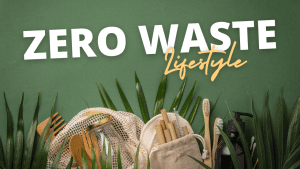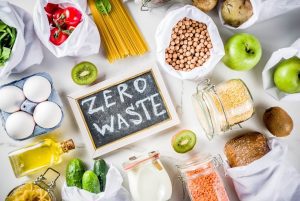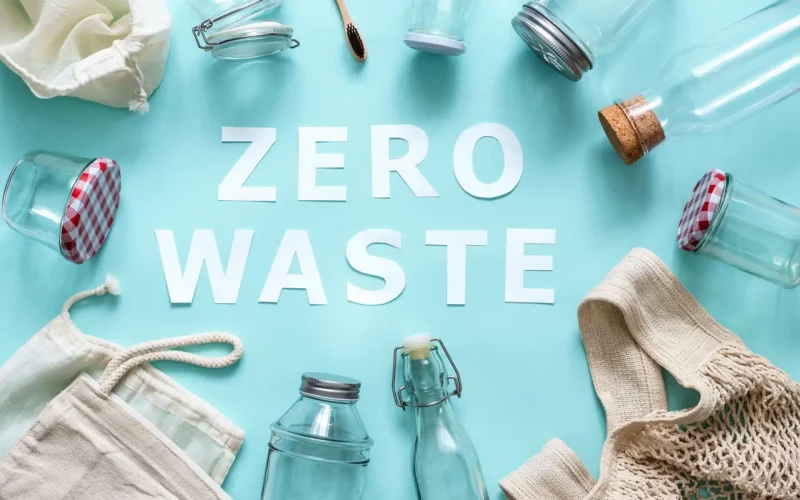Introduction
Living a zero-waste lifestyle is about minimizing your environmental impact by reducing, reusing, and recycling as much as possible. While achieving zero waste may seem challenging, small changes can make a big difference. In this article, we’ll explore 10 practical tips to help you transition to a zero-waste lifestyle. From reducing plastic use to composting, these strategies will guide you toward a more sustainable and eco-friendly way of living.
What Is a Zero-Waste Lifestyle?

A zero-waste lifestyle is all about reducing the amount of waste you throw away. It means making decisions that help the environment by reusing and recycling items instead of throwing them away. Instead of using single-use plastic items that end up in landfills, people who live a zero-waste life try to use things that are reusable and last longer.
The idea is not to create no waste at all, but to make less waste by buying smart and reusing things. Zero-waste living involves cutting down on plastic use, buying things in bulk, and choosing items that can be reused or recycled.
A zero-waste lifestyle aims to reduce landfill waste by following the 5R principle:
- Refuse: Avoid unnecessary items and single-use plastics.
- Reduce: Cut down on wasteful consumption.
- Reuse: Opt for reusable products instead of disposables.
- Recycle: Properly recycle items that cannot be reused.
- Rot: Compost organic waste to reduce landfill contributions.
By incorporating these principles, individuals can significantly minimize their environmental impact and promote sustainable habits.
The Role of Zero-Waste Living in Sustainability
Zero-waste living plays an important role in building a sustainable future. It helps to conserve resources, such as water, energy, and raw materials, by encouraging the use of reusable products and recycling. By making more sustainable choices, individuals can reduce their environmental impact. In addition, businesses and governments are being inspired to make changes to help reduce waste on a larger scale, such as offering more eco-friendly products and implementing recycling programs.
Simple Ways to Live Zero-Waste Lifestyle

1. Reduce Single-Use Plastics
Replace disposable items like plastic bags, straws, and bottles with reusable alternatives.
- Tip: Carry a reusable water bottle, shopping bag, and utensils with you.
- Example: Switching to reusable items can save hundreds of plastic products annually.
2. Compost Organic Waste
Turn food scraps and yard waste into nutrient-rich compost for your garden.
- Tip: Use a compost bin or pile in your backyard or explore community composting programs.
- Example: Composting can reduce household waste by up to 30%.
3. Shop in Bulk
Buy groceries in bulk to reduce packaging waste and save money.
- Tip: Bring your own containers to stores that offer bulk bins.
- Example: Bulk shopping can significantly reduce plastic and cardboard waste.
4. Choose Sustainable Products
Opt for products made from natural, biodegradable, or recycled materials.
- Tip: Look for certifications like Fair Trade or FSC (Forest Stewardship Council).
- Example: Bamboo toothbrushes and reusable silicone bags are great alternatives.
5. Repair and Repurpose
Fix broken items instead of throwing them away and find new uses for old items.
- Tip: Learn basic repair skills or visit a local repair café.
- Example: Repurposing old jars as storage containers reduces waste.
6. Avoid Food Waste
Plan meals, store food properly, and use leftovers creatively to minimize waste.
- Tip: Use apps like Too Good To Go to rescue surplus food from local businesses.
- Example: Meal planning can save money and reduce food waste by up to 25%.
7. Switch to Digital
Reduce paper waste by opting for digital documents, bills, and subscriptions.
- Tip: Use e-tickets, e-books, and online banking to cut down on paper use.
- Example: Going paperless can save trees and reduce clutter.
8. Make Your Own Products
Create DIY cleaning products, beauty items, and snacks to avoid packaging waste.
- Tip: Use simple ingredients like vinegar, baking soda, and essential oils.
- Example: Homemade cleaners are cost-effective and eco-friendly.
9. Support Zero-Waste Brands
Choose companies that prioritize sustainability and offer package-free or refillable products.
- Tip: Research brands that align with your values and support their initiatives.
- Example: Many zero-waste brands offer shampoo bars, reusable wraps, and more.
10. Educate and Inspire Others
Share your zero-waste journey with friends and family to inspire them to make changes too.
- Tip: Host workshops or share tips on social media to spread awareness.
- Example: Collective action can amplify the impact of zero-waste efforts.
How to Start Living Zero-Waste
Starting a zero-waste lifestyle doesn’t need to be overwhelming. You can take small steps to reduce waste in your daily life. Begin by swapping out single-use items for reusable ones. For example, use a reusable water bottle instead of buying bottled water. You can also switch to cloth bags instead of plastic ones when shopping. These simple changes are easy to make and help reduce the waste you produce. As you get used to these habits, you can try more zero-waste actions like composting or buying in bulk.
The Impact of Zero-Waste on the Environment

Living zero-waste has a big positive impact on the environment. By using fewer disposable items, less trash ends up in landfills and oceans, where it can harm wildlife. Reducing waste also means we use fewer resources to make new products, which can help save energy and reduce pollution. When more people live zero-waste, it can add up to a cleaner, healthier planet for everyone.
Challenges of Living Zero-Waste
Although zero-waste living has many benefits, there are challenges that come with it. One of the main difficulties is that it can take time and effort to change habits. For example, people may need to find alternative products to replace single-use plastics or spend more time finding sustainable options. In some areas, eco-friendly products and recycling services may not be easily available. Additionally, the cost of reusable products can be higher upfront, though it may save money in the long term.
The Future of Zero-Waste Living

The future of zero-waste living looks promising. As more people become aware of the environmental impact of waste, zero-waste lifestyles are likely to become even more common. Advances in technology and sustainability efforts from businesses can make it easier to live waste-free. With more eco-friendly products and services available, and increased support from governments and communities, living a zero-waste lifestyle will become more accessible for everyone. The goal is to make reducing waste a part of everyday life, leading to a cleaner, greener planet for future generations.
Zero-Waste vs. Traditional Lifestyle: A Quick Comparison
| Aspect | Zero-Waste Lifestyle | Traditional Lifestyle |
|---|---|---|
| Waste Production | Focuses on reducing waste to a minimum | Produces more waste, especially from single-use items |
| Plastic Use | Avoids plastic by using reusable alternatives | Heavy use of plastic products |
| Buying Habits | Buys fewer items, chooses quality over quantity | Often buys items without thinking of their environmental impact |
| Energy Use | Focuses on using renewable energy sources | Uses more non-renewable energy |
| Food Choices | Prefers local, plant-based, and organic foods | Often eats mass-produced, packaged foods |
How a Zero-Waste Lifestyle Affects You
| Factor | Positive Effects | Possible Challenges |
|---|---|---|
| Environment | Reduces pollution and waste | May take time to adjust to new habits |
| Cost | Saves money on disposable products | Initial investment in reusable products |
| Health | Healthier food and products | May require more planning for meals and shopping |
| Community Impact | Encourages others to live sustainably | May be hard to find eco-friendly options in some places |
| Personal Growth | Builds mindfulness and intentional living | Can be tough to change old habits |
Conclusion
Living a zero-waste lifestyle is a powerful way to reduce your environmental impact and contribute to a healthier planet. By making small, intentional changes, you can minimize waste, save money, and inspire others to do the same. Remember, every step counts—start with one change and build from there. What’s your favorite zero-waste tip? Share it in the comments below!












